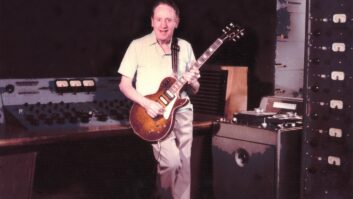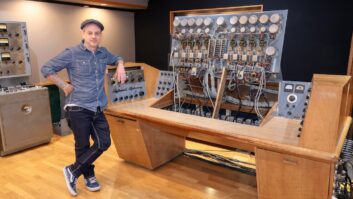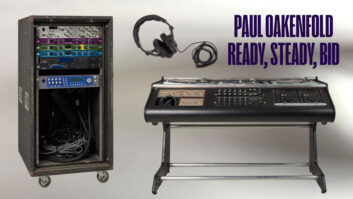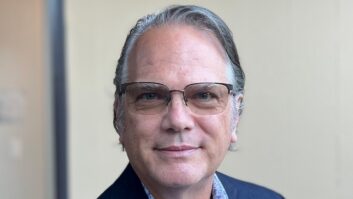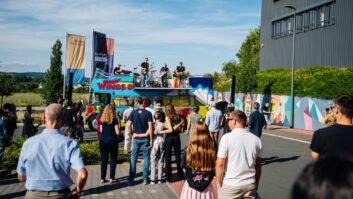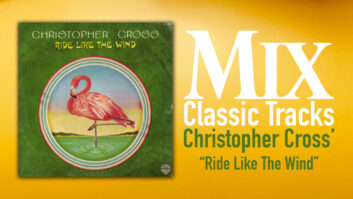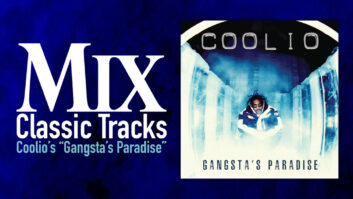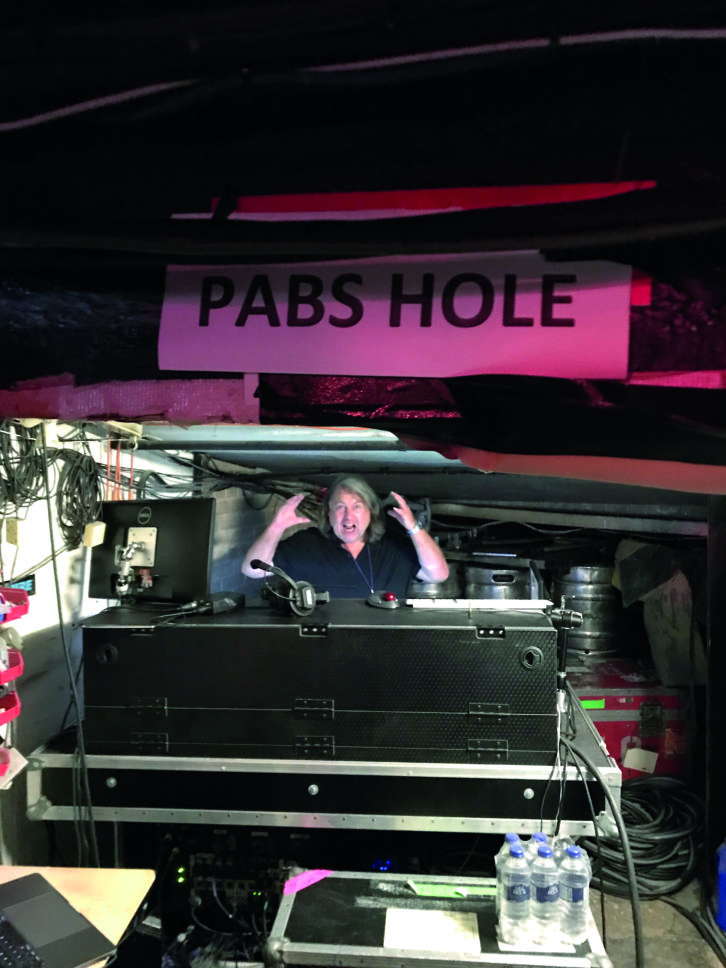
Spanning more than 40 years, the career of FOH mix engineer Paul “Pab” Boothroyd reads like a who’s who in the top tier of the music industry—Sir Paul McCartney, Eric Clapton, Paul Simon, AC/DC, Michael Jackson, Eurythmics, Pink, Faith Hill and so many others. It’s an impressive resume that any engineer would be proud to own, but make no mistake—Pab came up through the ranks and paid his dues along the way.
“I always credit my success to the fact that I’ve been very lucky,” he humbly begins. “I literally fell into it when I fixed an engine for a friend’s bandwagon. At the time I was a precision mechanical engineer and had a friend who was in a local pub band called the Dick Smith Band. The engine on their bandwagon was knackered, so they asked if I could fix it, which I did. The next question was, ‘Well, what happens if it breaks down and we’re on our way to Scotland to do a gig? Can you come with us just in case it goes?’
“So, I got in the van with them and off we went, playing gigs and getting influenced by participating in various recreational activities,” he continues, with a laugh. “I must have been around 18 or 19 years old, and that was my introduction to doing a gig on the road. The Dick Smith Band were a great bunch of guys. They taught me a lot about the fundamentals of setting up a P.A., like making sure the phase is correct—fundamentals that people know about but sometimes take for granted.
“Back in those days, quality control—the bits and bobs of the way things were wired together—was crude compared to today. It would be quite easy to get a microphone lead that had been repaired in haste and had been out of phase all its life. And you’d never know unless it happened to be in a stereo application, or something like that.”
Limited success and the breakup of the Dick Smith Band left Pab without a music gig until about a year later. As he was riding his motorcycle past a local venue, he recalls, “I saw a truck tipping a load of equipment, so I pulled over and asked what was going on. It was the load-in for a band called Tight Fit [the backing band for Tight Fit was Paul Young and the Q-Tips—Ed.]. I gave them a hand loading in and stayed for the show. That was the first time I was involved in a proper production. A local sound company called Concert Sound was providing the gear, so I met some of the guys, including the engineer who would become my mentor and inspiration to this day, Peter Granger. He was way ahead of his time and was probably best-known for being Dire Straits’ engineer.
“Peter was mixing Tight Fit in between Dire Straits tours, and we became good friends,” he continues. “I was invited to watch him do a Dire Straits show, and it was an experience that really hit me. I thought… ‘I want to be him. I want to do that.’ It was just amazing. Through Peter I began an association with Concert Sound in the UK, who furnished equipment for Dire Straits. As the company grew, they took on more people and took me underneath their wing. I worked with and learned from great engineers. Those guys gave me my first touring work.”
Pab’s relationship with Concert Sound led to touring work with artists like Tom Jones, Level 42, John Denver and Leo Sayer, then as a P.A. tech on the 1985 Dire Straits Brothers In Arms tour, then as systems tech for the On Every Street world tour. Not too shabby. It also would lead to the gig of a lifetime—front-of-house for Paul McCartney.
“Concert Sound used to take care of some of Showco’s UK shows, certainly if it was a one-off,” Pab explains. “I came with the P.A. as Systems Engineer to assist the FOH setup and Paul’s engineer at that time, Mike Ponczek. I had done rehearsals and a warm-up show, and all seemed well. After the show I was approached by management—notably Barrie Marshall, who has been Paul’s Tour Director for 30 years-plus—and asked if I could do the second performance the next day because Mike couldn’t make it. I guess I did something right! I’ve been Paul’s long-standing live audio engineer for over 30-plus years now.”
ANALOG, DIGITAL, AC/DC, MCCARTNEY
Pab has seen a lot of technological developments in his touring years, including the transition from analog to digital mixing systems, yet he still has a foot firmly planted in each world and speaks candidly on the subject.
“I use an analog desk for AC/DC because it’s an artist preference,” he says. “I spent a few years running their writing studio—me behind a desk, with Angus and Malcolm writing the songs. And Malcolm’s love of keeping it straight and simple became very apparent. He’d say, ‘Oh it’d be great if we could tour with a Neve and have 1073 preamps…’ Yes, but it wouldn’t last five minutes!
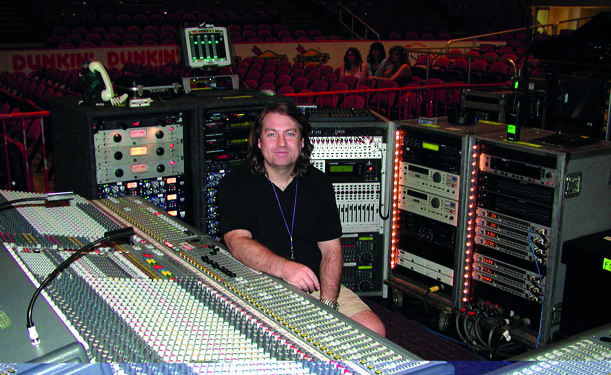
“A Midas XL4 is a good analog desk for touring,” he continues. “It’s pretty much bulletproof glass. There are other nice desks out there, but back then, if need be, I could get a spare part for a Midas anywhere in the world, maybe nick a module or power supply from one that’s sitting in a warehouse just to get through a show. When I’m touring with AC/DC I now have a backup desk, which the support band uses. I try to make that a digital console, something that everybody would know, like an Avid Profile. I can also use that for recording the band to Pro Tools for archiving purposes.
“McCartney, on the other hand, would more likely say, ‘Whatever you want to use, Pab, you know what’s best so carry on.’ We talk about certain elements, but at the end of the day he trusts me for doing what I do. When I started mixing Paul McCartney I had a couple of XL4s with racks and racks of outboard gear. The XL4s were bused together as one console just to boost the input count. I was running around my racks like a lunatic, tweaking the compressor makeup gain or bypassing the gates because the drummer was playing softly… constantly doing this dance, working the sound like a mad professor! It’s a great way to learn because it gives you a full understanding of how dynamics work with outboard processing and gain structure, and I had great results.
“I think that most old-school engineers who made the transition from analog to digital would tell you that the first time they got their hands on a digital desk, they used it like an analog desk, without necessarily getting into show files with multiple song scenes and scenes within song scenes, et cetera. You dial up the gain, push up the faders, and mix like you would on any other desk—but they’re capable of so much more. I can press ‘recall’ and be in a whole different world, change all the ‘outboard’ gear and the routing. It’s amazing, and for McCartney it works very well. It’s made my work more consistent because I’m recalling to the same parameters all the time, given that the band are playing the same and are disciplined. I’ve been very fortunate to have that with McCartney and his bands. For example, in ‘A Day In The Life’ where it goes from dry to wet in the dream sequence, in a blink I can switch to all this psychedelic, trippy stuff. To do that manually in the analog world I’d have run around like a headless chicken for about 10 seconds and missed the moment!
“Using analog gear requires that you carefully work out exactly what you need to take on a job because you can’t just find another channel without getting another desk. When I co-mixed ‘The Concert for George’ at the Royal Albert Hall, things just kept getting added. ‘Oh, by the way, did we forget to tell you that a 56-piece orchestra is going to come in and play on this song?’ Oh, great, thanks. I’m only exaggerating a little bit. It’s a logistics nightmare for those big shows where you’ve got guest artists walking on and off. Digital helps make that a little bit sweeter, because when it comes to Genesis joining Led Zeppelin on the Moon or whatever, you can recall it and have a good starting point.”
HITTING THE CURVEBALLS
Mixing FOH for McCartney comes with a unique set of challenges, the least of which is that shows can take place in rather unusual settings. “Working with somebody like McCartney opens a lot of doors because he’s so revered and respected,” Pab explains. “He has no fear for taking on challenges.
“Just recently, we were doing rehearsals for a performance at Grand Central Station in New York City,” he continues. “The worst environment anybody could experience for a show: granite, marble, glass and concrete. Completely reflective, nothing friendly about it. It was an acoustic nightmare. The producer of the show had this idea that we could start the song ‘Let It Be’ with Paul playing this tiny music box piano. They would show a tight shot of Paul’s hand playing the music box for the start of the song, and then Paul would go into the song on his real piano.
“We were doing this on a makeshift stage that we couldn’t access until a certain time, the idea being that the band would come in, do a quick run-through, and off you go. Not a chance in hell. In that room you can hear a person talking from a thousand yards away because of the acoustics. So we’re going to come out of a rock song, Paul is going to put his guitar down, jump behind the piano, start playing the music box—and the audience need to hear this clearly so they can recognize the start of the song.
“I’m thinking, ‘How am I supposed to get this across?’ so I tried a DPA 4099 on the music box and it was so sensitive that you could hear the cogs in the mechanism. I had to back off the mic so that you could hear the notes more than the cog going ‘round. I thought that there was no way I was going to get this above an audience going loopy, but it worked. We had been using DPA products for a long time, under-miking the cymbals or using the 4061 inside a conga or bongo when Abe (Laboriel Jr., drummer) would play them on his knee. It looked very natural, like they weren’t even miked. Those mics have handled crazy situations in a very amazing way—‘got me out of jail’ many times.”
One of Pab’s live sound “tricks” is placing microphones underneath cymbals instead of using the typical overhead placement. “Lots of people have done it for various reasons,” he observes. “With AC/DC, if I set a pair of overhead mics in the typical placement, you’d hear all this noise coming across the stage but you wouldn’t hear the cymbals. I’ve tried different microphones underneath but when the DPA 4099 came out, we used these little clips to place the mics underneath. You have to experiment with the position and get the mic at the fulcrum of the cymbal so that you get less swish and a more controlled window of sound. But bleed isn’t much of an issue. The mic is close to the cymbal so you can gain them down.”
HITTING THE BRAKES
Not long before Pab and I spoke, he learned that McCartney’s appearance at the Glastonbury Festival scheduled for late June 2021 had been canceled for the second year in a row due to the global Covid-19 pandemic.
“I think we did the Glastonbury Festival 20 or so years ago,” he recalls, “and we were supposed to perform at their 50th Anniversary last year, but it was canceled. McCartney had a string of dates that were canceled in 2020, and the virus put a hold on AC/DC, as well.
“AC/DC have just come through this sort of resurrection with the reintroduction of Brian (Johnson, lead singer), Phil Rudd (drums) and Cliff Williams (bass). Back in 2016 we were in the middle of the Rock Or Bust tour, and Brian was basically told by his doctors ‘do one more show and that’s it. Your hearing will be gone.’ Axl (Rose) came in, did a great job, and we got to the end of the tour, but Brian was destroyed and so were the band. It was horrible.
“Straight after that tour, Brian was approached by Stephen Ambrose (Founder, Asius Technologies), the guy who invented in-ear monitors. Stephen was working on some new in-ear technology that might make it possible for Brian to return to performing. It wouldn’t cure him, but would make it possible for Brian to do his job.
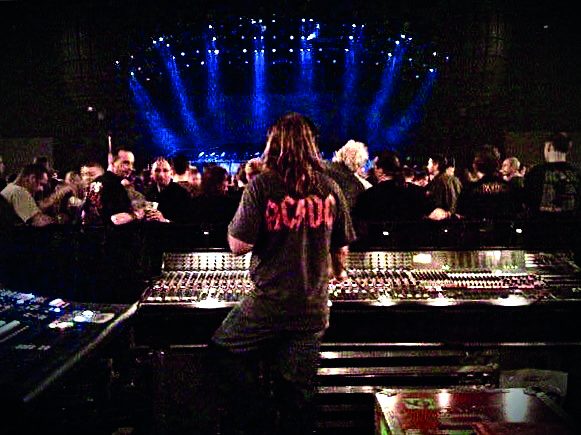
“Long story short, Brian tried it and it worked. I was visiting Brian on a holiday, and Stephen came over to meet me, show me the system and see what I thought. It’s very interesting technology. Right around the same time, the new album (Power Up) came out and the band were doing a video. Their tour manager asked me what I thought about Brian using Stephen’s new in-ear system, and I said, ‘Get all the guys together in a room and turn it up to 11. That’s the only way we can know if this is going to work—whether the guys in the band can still do their thing, and whether or not Brian can hear and do his thing.’
“These special earpieces were placed inside Brian’s ears. It was incredible. I’ve never seen so many grown men cry because they could hear again. Cliff Williams has Meniere’s Disease and balance problems because of his hearing loss but he put these earpieces in and, ‘Hell, I can hear again.’ Next thing you know we’re doing this little trial… ‘Let’s try a few songs for a short while… lets ease in’… Within a week we’re doing the full show every day in rehearsals, great playing and singing, and we’re talking about loud. I mean—it’s AC/DC! Brian and Cliff had no hearing issues and no fatigue.
“We’re all waiting for the technology to be finalized and go into production, but I think it will be a game-changer. If it hadn’t been for the virus, Brian and most of the band would be using these earpieces and we’d probably have started touring last year. [Stay tuned to Mix for more in the future on Ambrose and Asius Technologies—Ed.]
THE GREATEST RIDE
Working at the top level of the industry can be more than a bit stressful, and Pab admits that perhaps the intensity of his schedule was getting to be a bit much.
“Right before the virus hit toward the end of 2019, I was really getting burnt out and at one point actually doing two tours at once—to the point where my health was starting to suffer,” he says. “I was beginning to think that maybe it’s time to ease off on this, but being away from the industry and being home has made me look at things differently. It’s let me decompress, and I’m actually quite happy to have had quality time with myself, and my family.
“I’ve been in the business since 1980, and after 40-odd years, feel like I couldn’t have achieved much more,” he concludes. “I’m privileged to be working with one of the greatest living artists, and then at the flip of a coin I’m working with AC/DC, who top their genre. I have every intention of continuing with those two artists for as long as I can.
“I love touring. There’s nothing like standing behind a desk, you unmute, and the house lights go out. You feel that sizzle, the open microphones and all the little buzzes and things. Then boom! You’re off! It’s the greatest ride and the greatest rush. It’s just fantastic.”
Sound Advice
Obviously, Pab has tons of experience (and more than a few good stories!) so he’s been invited on more than one occasion to share his knowledge with up-and-coming engineers and musicians.
“I’ve been lucky to have been asked to talk about my work,” he reveals, “and hopefully I can leave some kind of legacy for the next generation that helps them in their journey. LIPA (Liverpool Institute for Performing Arts, Liverpool, England)—which Paul McCartney helped to found—asked me to come in and give a talk to their kids. I thought, ‘I’ll do that. There won’t be that many people there.’ But by the time it came to fruition, there’s a sea of people, and I’m thinking, ‘What have I got to say?’
“Well, keep it simple. Stay with the fundamentals and don’t lose your grounding. The P.A. has to be correct for the room. Don’t go racing ahead to get the latest digital desk and put all these plug-ins on the channels because that’s what other people say you’re supposed to do. Pay attention to the little things. Why did you use a ’57 on the snare? ‘Well, that’s what everyone uses.’ But did you listen to it?
“Don’t forget your basic training. Do yourself a favor: Pick out a bunch of microphones, plug them into a console, put your headphones on and speak into them. Learn how the microphone behaves when you’re on- or off-axis, close or far away, so that when you come to work for an artist you understand what that starting point of sound, whether it’s a microphone or a DI, is doing to your source.”
It all starts there at the source. Simple. Get it right there, and your off, rockin’ and rollin’.
